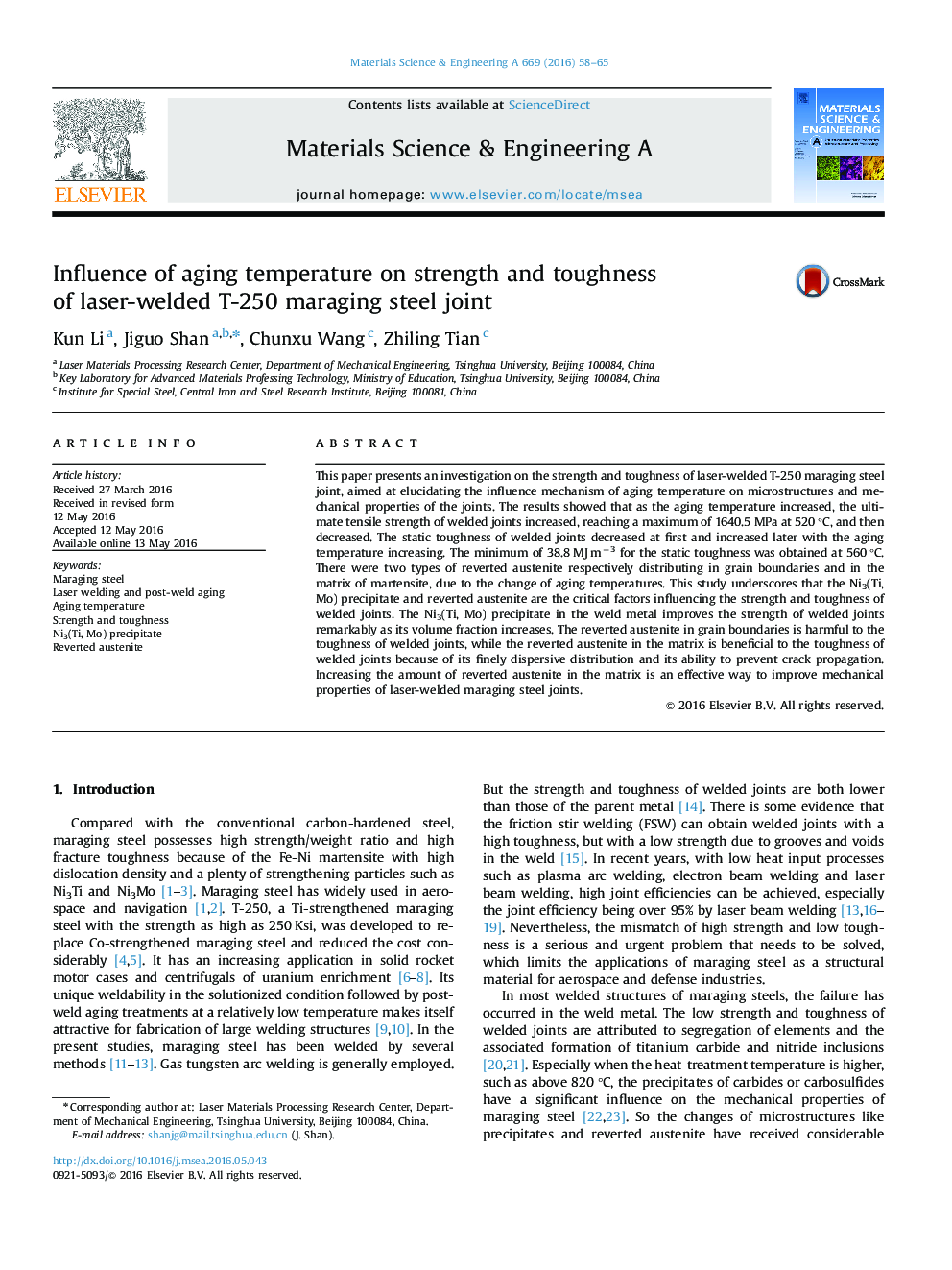| Article ID | Journal | Published Year | Pages | File Type |
|---|---|---|---|---|
| 1573350 | Materials Science and Engineering: A | 2016 | 8 Pages |
Abstract
This paper presents an investigation on the strength and toughness of laser-welded T-250 maraging steel joint, aimed at elucidating the influence mechanism of aging temperature on microstructures and mechanical properties of the joints. The results showed that as the aging temperature increased, the ultimate tensile strength of welded joints increased, reaching a maximum of 1640.5 MPa at 520 °C, and then decreased. The static toughness of welded joints decreased at first and increased later with the aging temperature increasing. The minimum of 38.8 MJ mâ3 for the static toughness was obtained at 560 °C. There were two types of reverted austenite respectively distributing in grain boundaries and in the matrix of martensite, due to the change of aging temperatures. This study underscores that the Ni3(Ti, Mo) precipitate and reverted austenite are the critical factors influencing the strength and toughness of welded joints. The Ni3(Ti, Mo) precipitate in the weld metal improves the strength of welded joints remarkably as its volume fraction increases. The reverted austenite in grain boundaries is harmful to the toughness of welded joints, while the reverted austenite in the matrix is beneficial to the toughness of welded joints because of its finely dispersive distribution and its ability to prevent crack propagation. Increasing the amount of reverted austenite in the matrix is an effective way to improve mechanical properties of laser-welded maraging steel joints.
Related Topics
Physical Sciences and Engineering
Materials Science
Materials Science (General)
Authors
Kun Li, Jiguo Shan, Chunxu Wang, Zhiling Tian,
